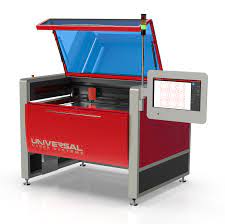The Fascinating World of Laser Systems
Laser systems have revolutionized numerous industries with their precision, versatility, and efficiency. From cutting-edge medical procedures to intricate manufacturing processes, lasers have become indispensable tools in modern technology.
One of the key advantages of laser systems is their ability to deliver highly focused beams of light that can be precisely controlled. This precision allows for intricate cutting, engraving, welding, and marking tasks with unparalleled accuracy.
In the medical field, laser systems are used for a wide range of applications, including surgery, dermatology, and ophthalmology. The ability of lasers to target specific tissues with minimal damage to surrounding areas has made them invaluable in delicate procedures.
Manufacturing industries also benefit greatly from laser systems. Laser cutting machines can effortlessly slice through various materials with speed and accuracy, making them ideal for mass production processes. Laser welding systems provide a clean and efficient method for joining metals without the need for additional materials.
Furthermore, laser systems play a crucial role in research and development across different fields. Their versatility allows scientists to perform precise measurements, spectroscopy analysis, and material processing with unmatched precision.
As technology continues to advance, the capabilities of laser systems are only expected to grow. Innovations in laser technology promise even greater efficiency, power, and versatility in the years to come.
Whether in healthcare, manufacturing, research, or entertainment, laser systems continue to push the boundaries of what’s possible. Their impact on society is undeniable, shaping industries and opening up new possibilities for innovation and progress.
Understanding Laser Technology: Types, Functionality, Applications, Safety, and Environmental Impact
- What are the different types of laser systems available?
- How do laser systems work?
- What are the common applications of laser systems?
- What safety precautions should be taken when using laser systems?
- Are there any environmental considerations associated with using laser systems?
What are the different types of laser systems available?
When exploring the realm of laser systems, a common inquiry arises: “What are the different types of laser systems available?” Laser systems come in various forms, each tailored to specific applications and requirements. From solid-state lasers to gas lasers, fiber lasers, and semiconductor lasers, the diversity of laser technologies offers a wide range of capabilities. Solid-state lasers, known for their robustness and high power output, find applications in cutting and welding industries. Gas lasers, such as CO2 lasers, excel in engraving and marking tasks due to their precise beam quality. Fiber lasers are prized for their efficiency and versatility in materials processing. Semiconductor lasers play a crucial role in telecommunications and optical storage. Understanding the distinctions among these types of laser systems is essential for selecting the most suitable technology for a particular task or project.
How do laser systems work?
Laser systems work by producing a concentrated beam of light through a process called stimulated emission. This process begins with an energy source, such as electricity or light, exciting atoms within a laser medium, typically a solid, liquid, or gas. As the atoms become energized, they release photons of light. These photons bounce back and forth between mirrors within the laser cavity, stimulating more atoms to emit additional photons. This amplification creates a coherent beam of light that exits the laser through a partially reflective mirror as a powerful and focused laser beam. The specific properties of the laser beam, such as its wavelength and intensity, depend on the type of laser medium and the design of the laser system.
What are the common applications of laser systems?
The common applications of laser systems span a wide range of industries and fields, showcasing the versatility and precision of this cutting-edge technology. In manufacturing, laser systems are used for cutting, welding, and marking various materials with exceptional accuracy and efficiency. In healthcare, lasers are employed in surgeries, dermatology procedures, and ophthalmology treatments due to their ability to target specific tissues with minimal damage. Additionally, laser systems find applications in research and development for tasks such as spectroscopy analysis, material processing, and precise measurements. The diverse uses of laser systems highlight their vital role in advancing technology and innovation across different sectors.
What safety precautions should be taken when using laser systems?
When using laser systems, it is essential to prioritize safety precautions to prevent potential hazards and ensure the well-being of individuals operating or in proximity to the equipment. Some key safety measures include wearing appropriate protective eyewear to shield eyes from direct or reflected laser beams, ensuring proper ventilation in the workspace to minimize exposure to fumes or vapors, and following strict protocols for handling and storing laser equipment. Additionally, establishing clear warning signs, implementing safety interlocks, and providing thorough training for personnel on safe operating procedures are crucial steps in maintaining a secure environment when working with laser systems. By adhering to these safety precautions diligently, the risks associated with laser technology can be significantly minimized, promoting a safe and productive work environment for all involved.
Are there any environmental considerations associated with using laser systems?
When considering the use of laser systems, it is important to take into account the environmental implications associated with their operation. One key environmental consideration is the energy consumption of laser systems, as they can require significant power to function efficiently. Additionally, the materials used in lasers and their disposal at the end of their lifecycle can raise concerns about potential waste and pollution. Proper management of laser system components and adherence to eco-friendly practices are essential in minimizing the environmental impact of utilizing laser technology.

No Responses